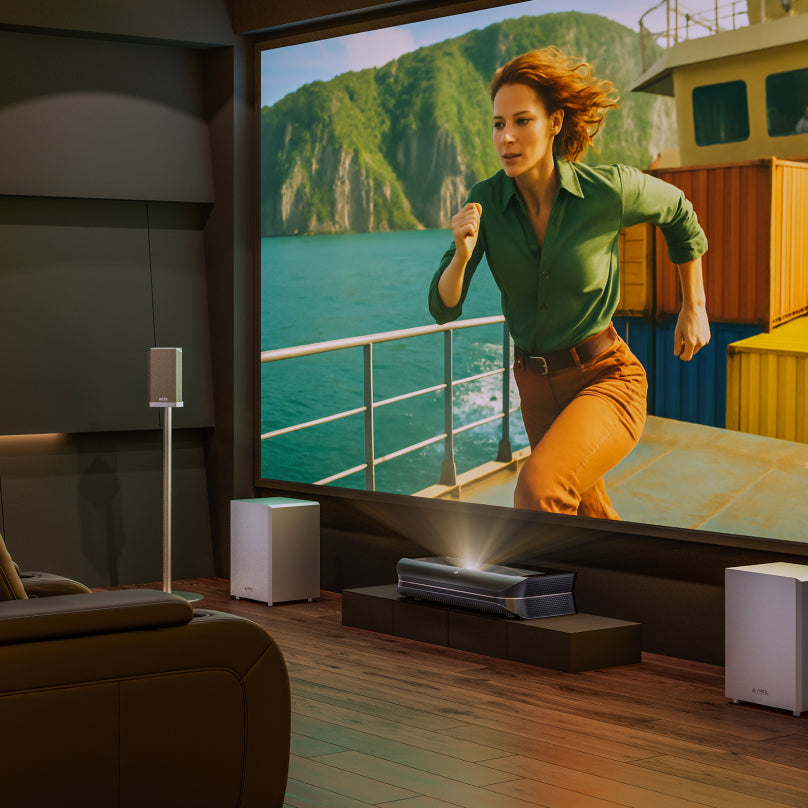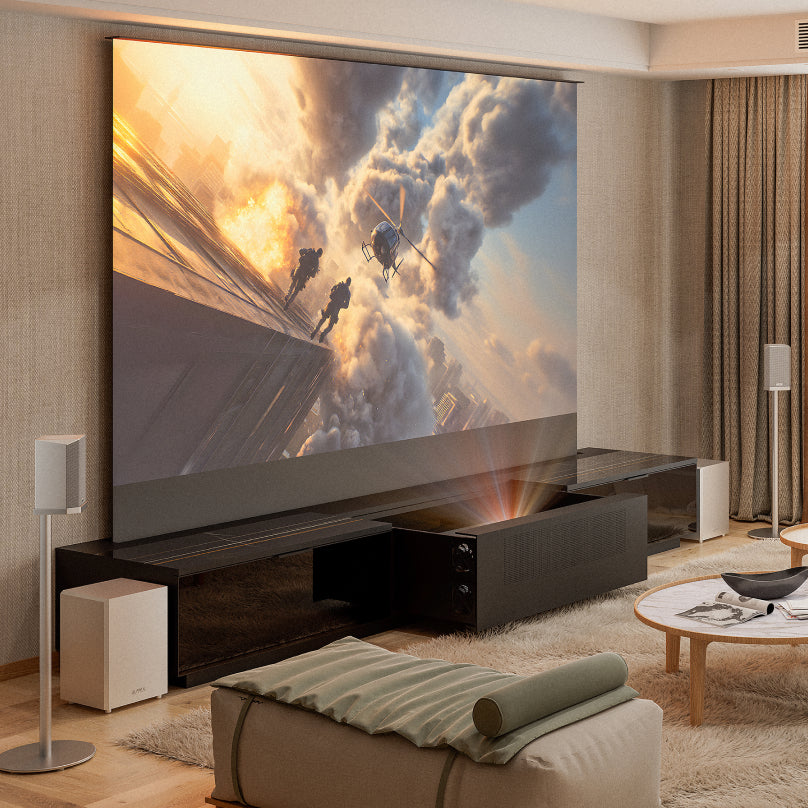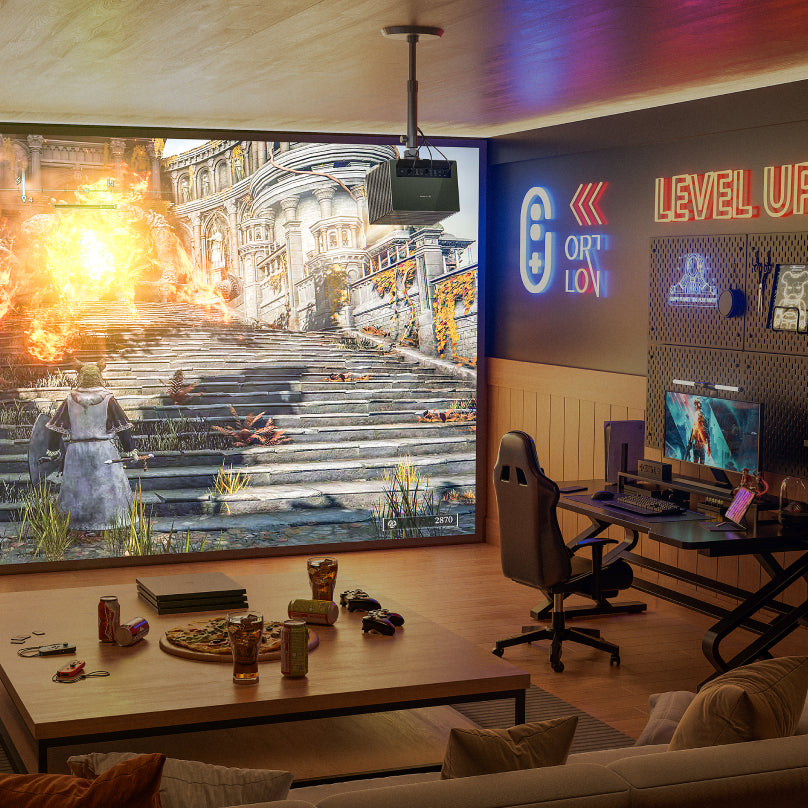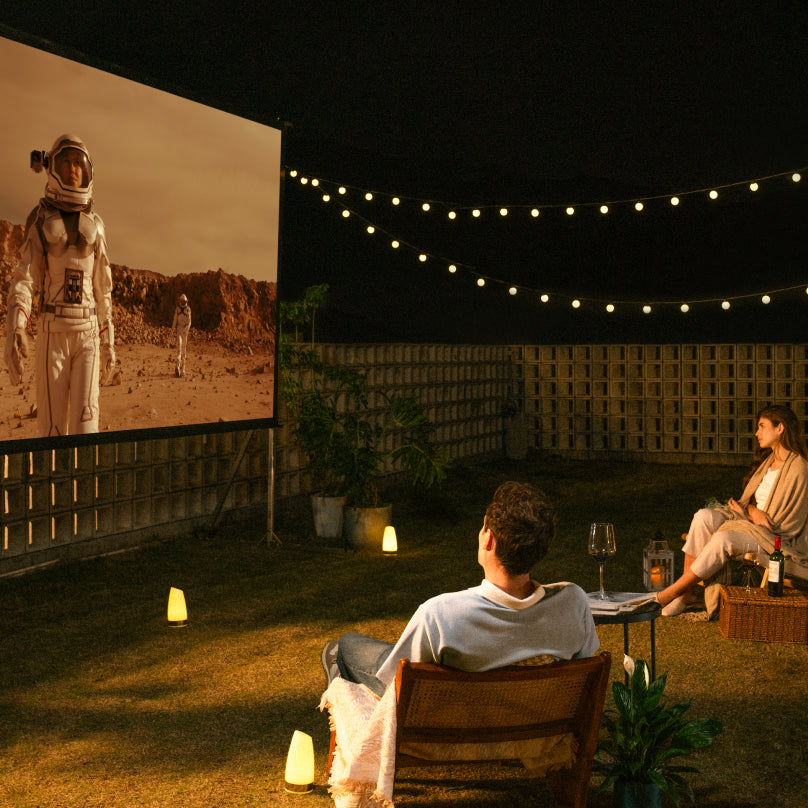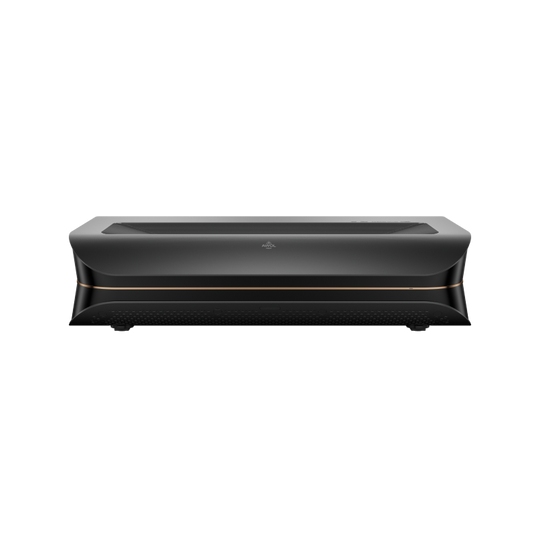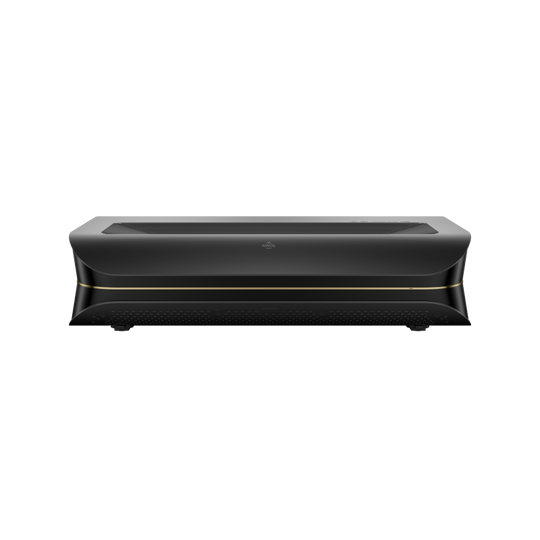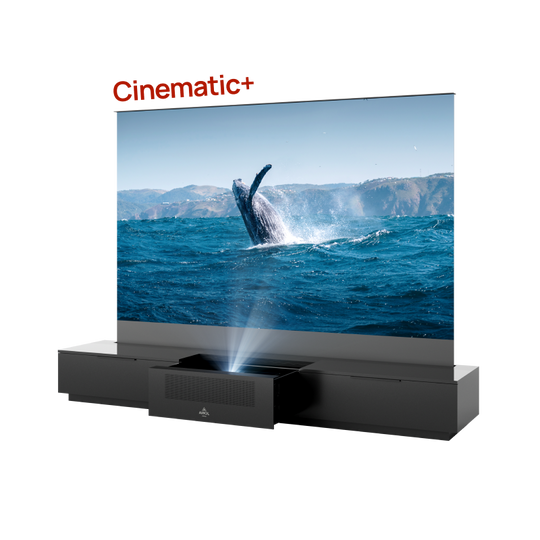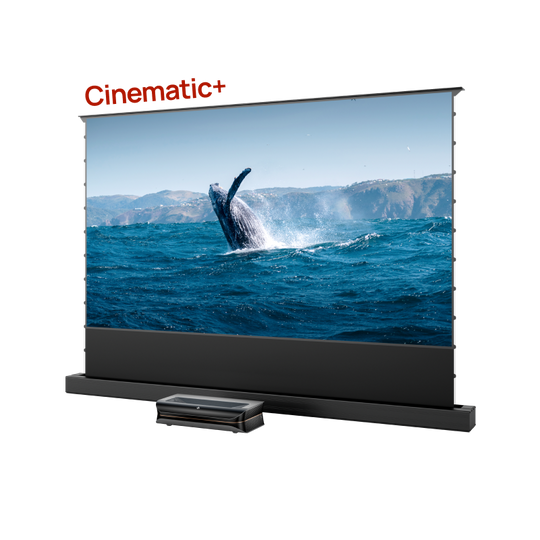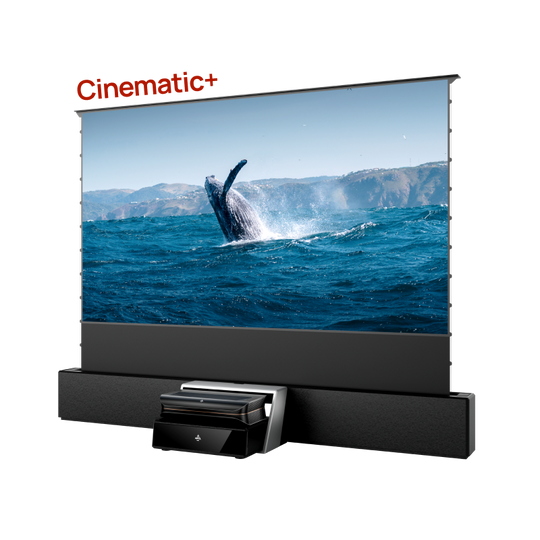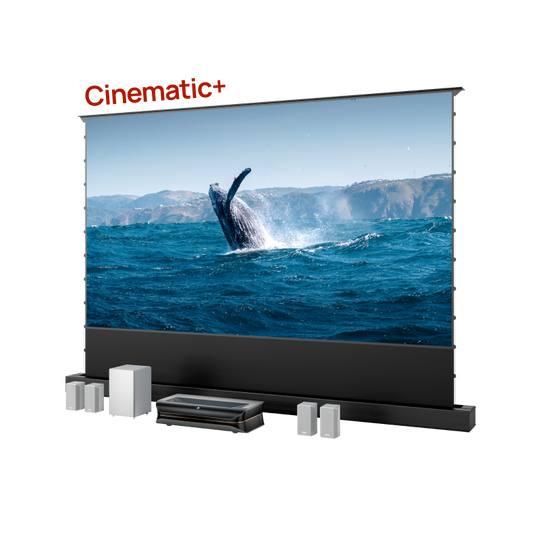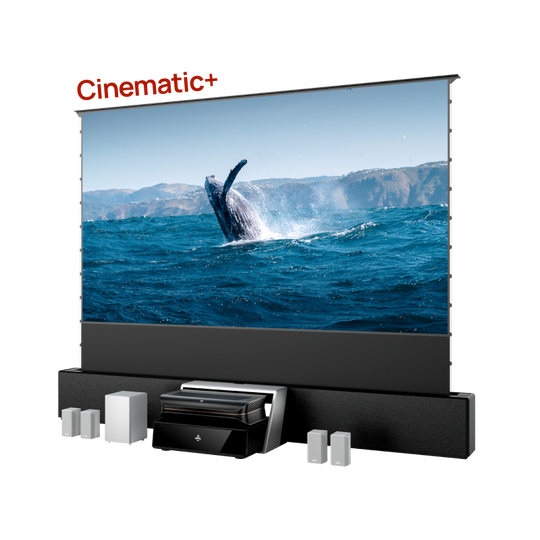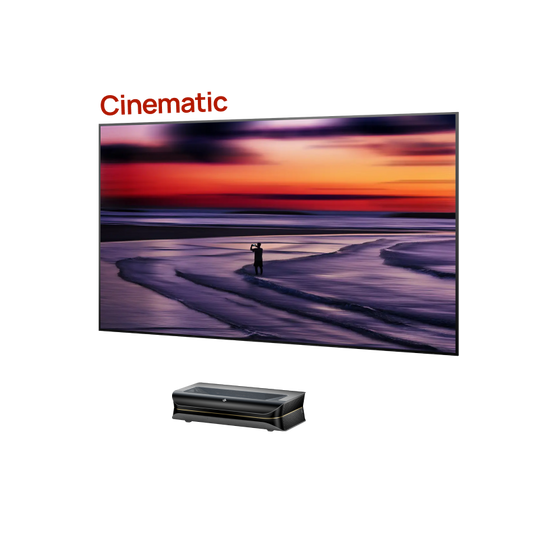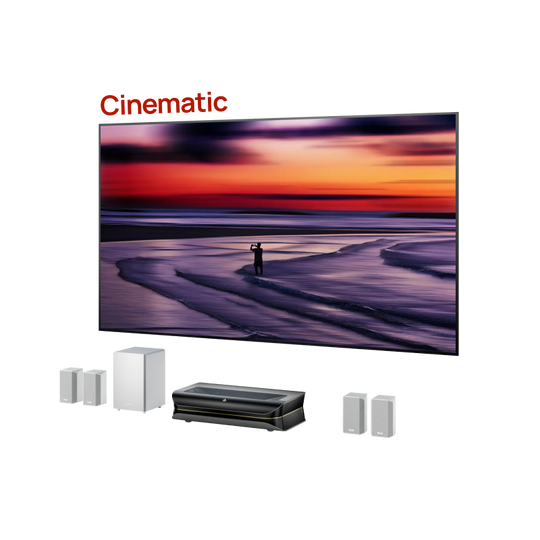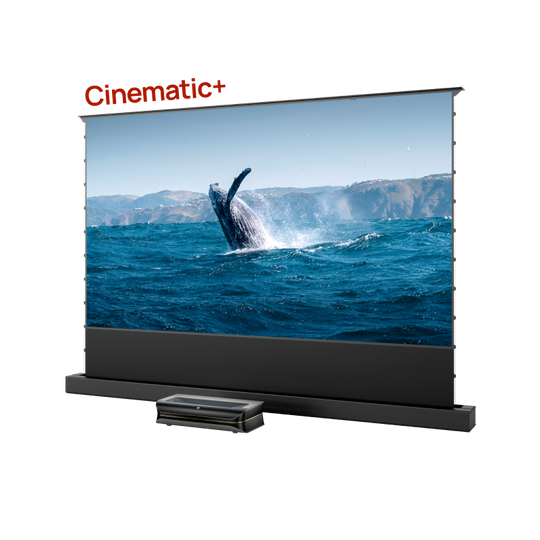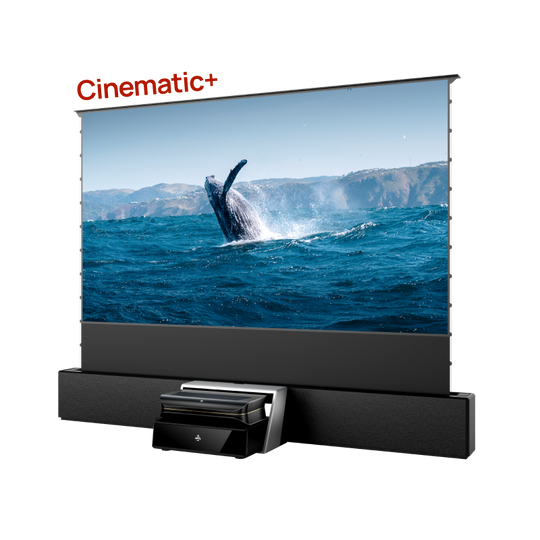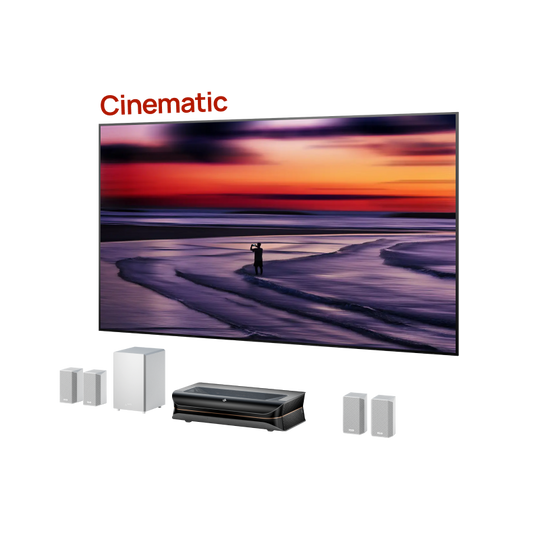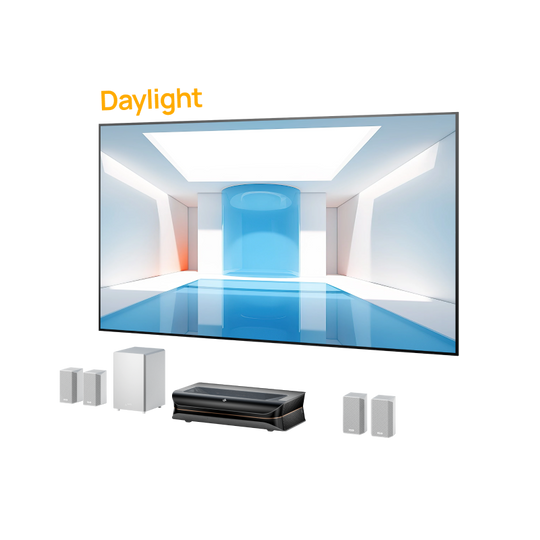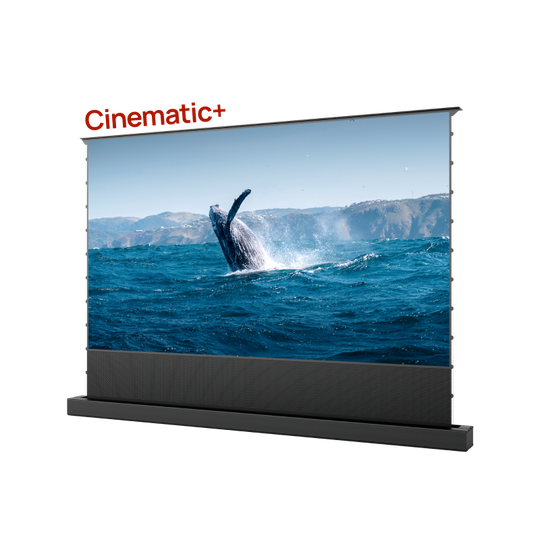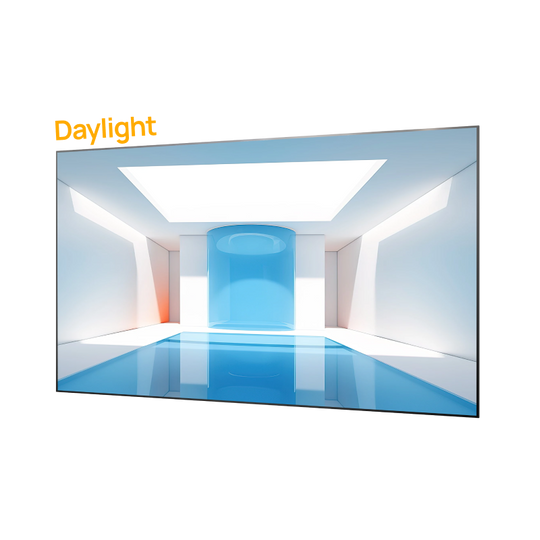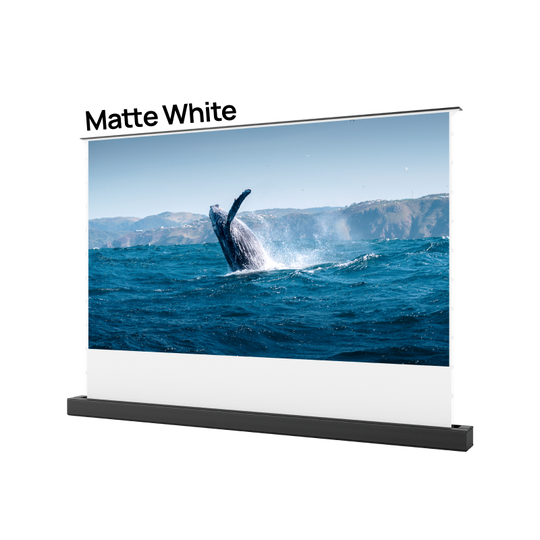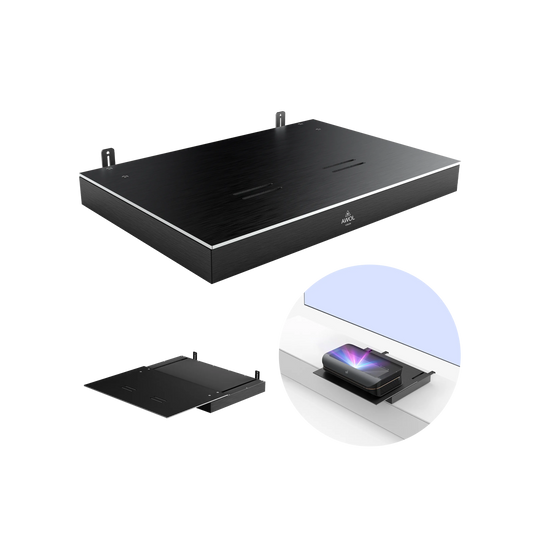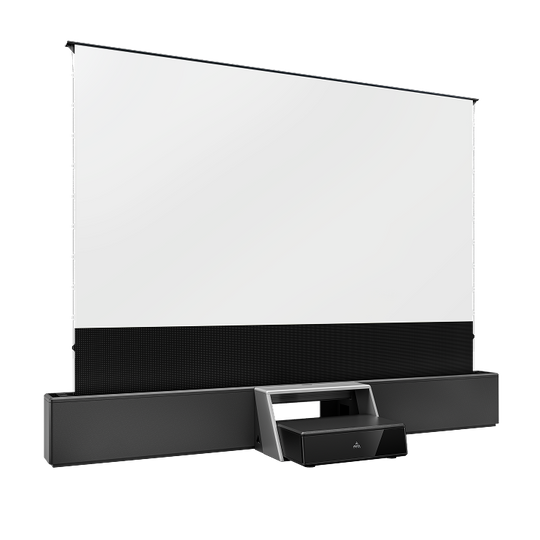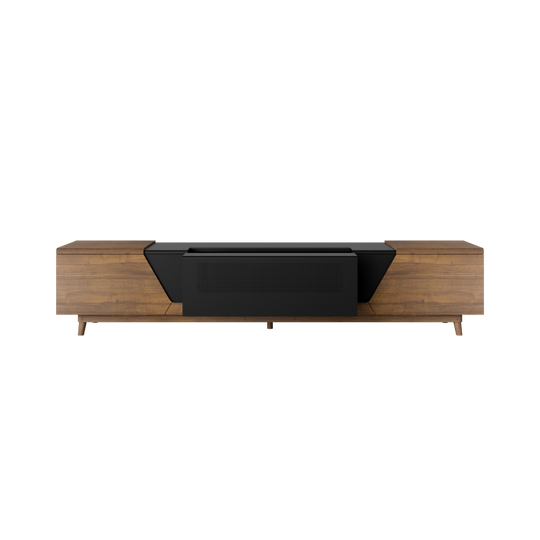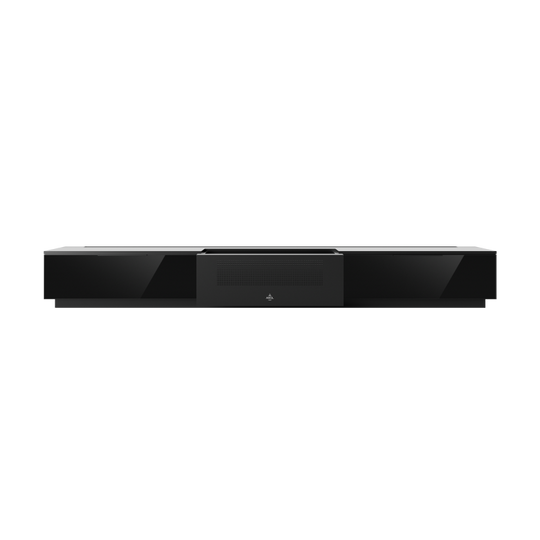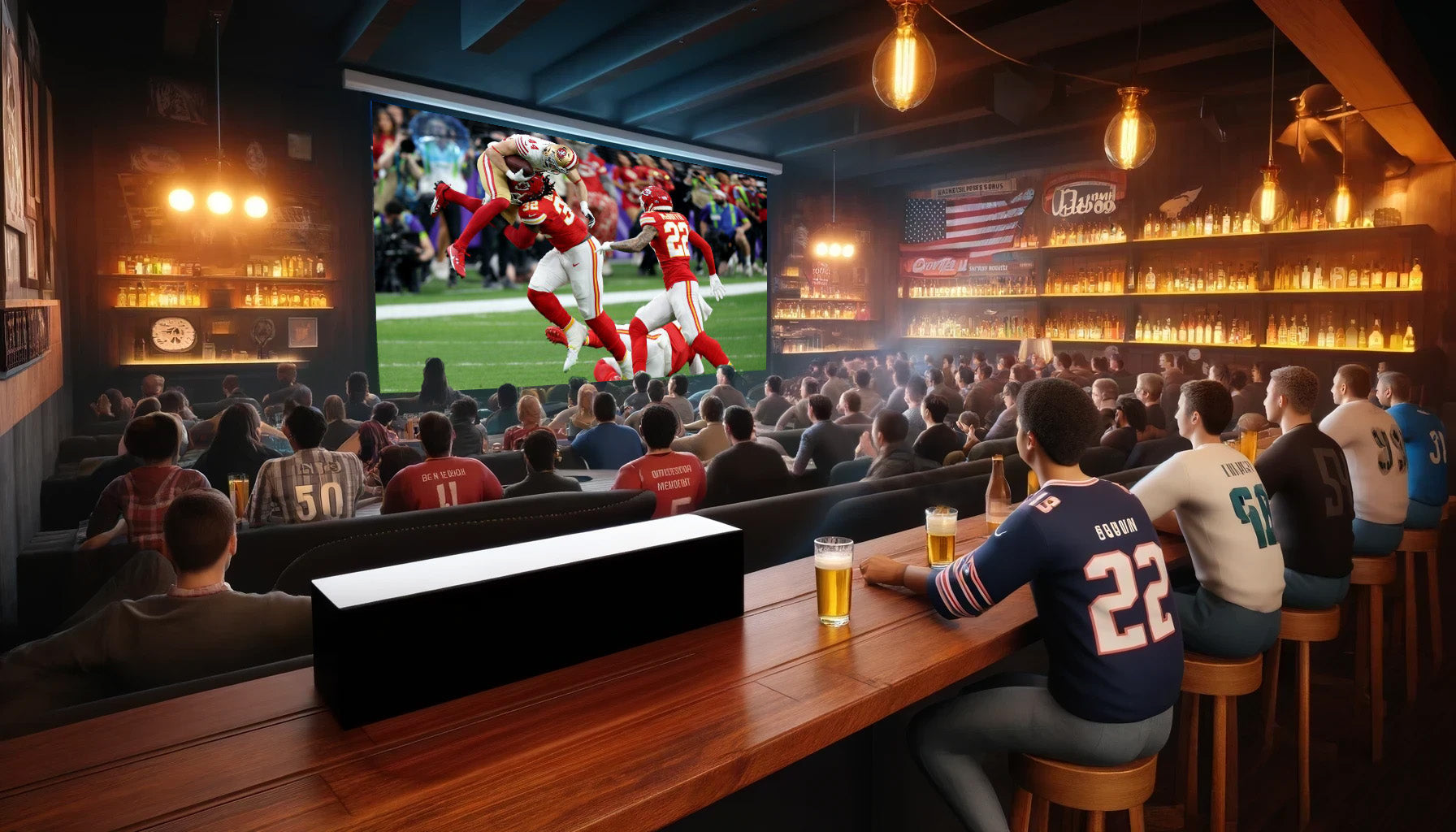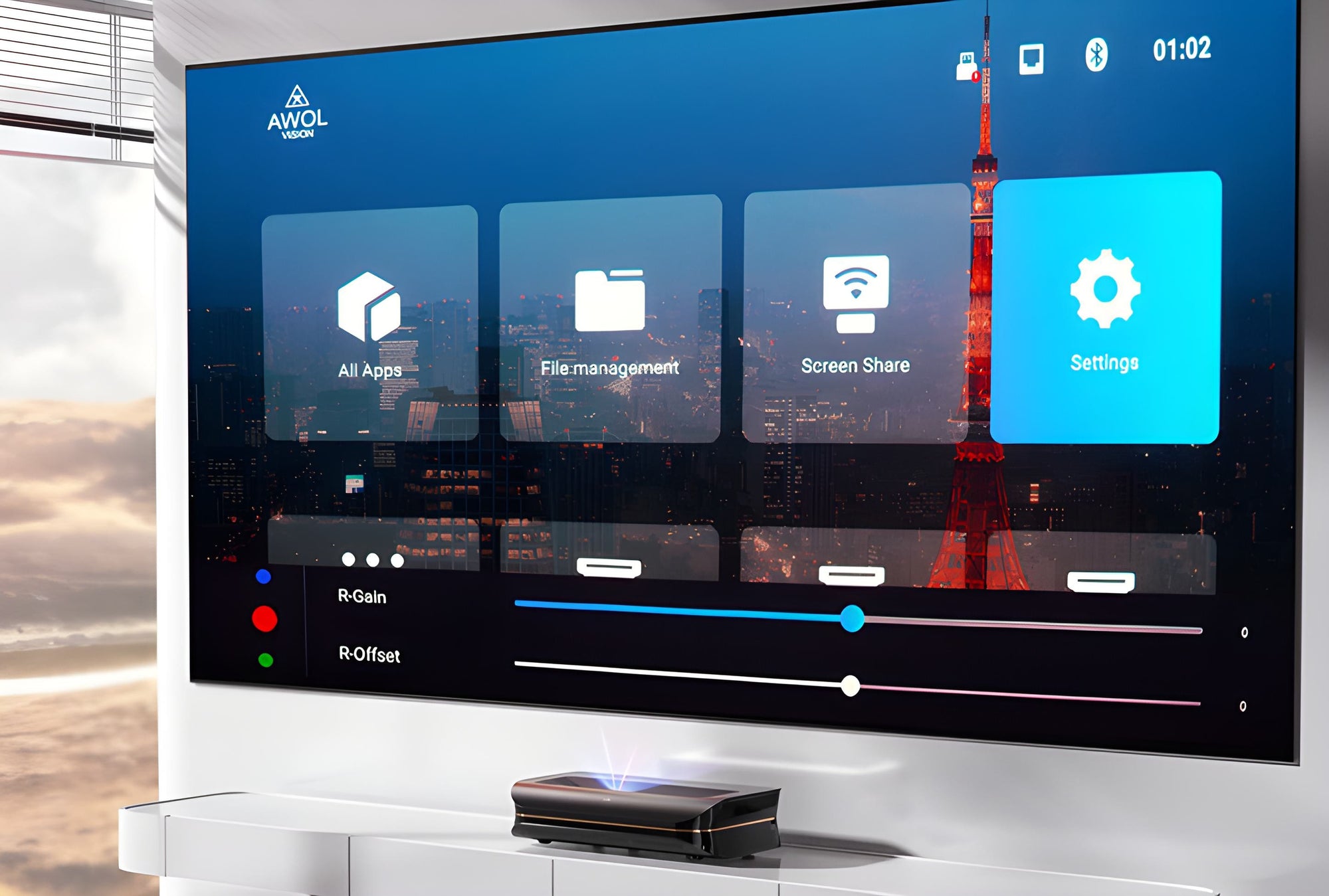Now that you have bought a projector, the next question is whether to choose a projector screen or a wall for projection. You may be perplexed by the choice between the two, as the ultimate choice depends on your budget and preferences. We've got you covered if you don’t know what to choose. Here, we present a detailed comparison of projector screens and walls, helping you make an informed decision.
Understanding Projector Screen Benefits
Projector screens are a valuable addition to home entertainment setups, offering an enhanced viewing experience compared to bare walls. However, the quality and performance of projector screens can vary significantly depending on the type and price range. Below are some potential benefits of using a projector screen, keeping in mind that these features are not universal across all screens.
Improved Image Quality
Many projector screens are designed to enhance image quality, often using specialized materials or coatings to achieve vivid colors and better contrast. Some high-end screens effectively minimize the impact of ambient light and deliver a sharp, detailed picture. For those investing in 4K or HD projectors, a well-matched screen can elevate the viewing experience. However, it's important to note that entry-level screens may not always offer the same level of performance.
Better Color Accuracy
A good projector screen can help achieve more accurate and vibrant colors compared to a plain wall, which might have uneven surfaces or imperfections that distort the image. Some screens are equipped with ambient light rejection (ALR) technology, which improves color accuracy under certain lighting conditions. That said, not all screens have this feature, and performance can vary based on the specific model.
Enhanced Brightness and Contrast
High-quality projector screens can complement projectors with high brightness levels, making them suitable for rooms with some ambient lighting. Additionally, screens with better contrast capabilities can add depth to dark scenes, improving the overall visual experience in dimly lit rooms. However, not all screens are optimized for high brightness or contrast, so it's crucial to select one that matches your projector and room conditions.
The Drawbacks of Wall Projections
Now that you have learned about the advantages of investing in a projector screen, it is important to highlight the potential drawbacks of wall projections.
Surface Imperfections and Texture
The walls are mostly uneven, and the paint has chipped away due to water seepage or long-term use. The chipped paint, cracks, and bumps make projection a huge challenge. Projecting on such walls distorts the projected image, resulting in poor video quality.
Color and Reflectivity Issues
Walls that are painted in colors other than white often pose reflectivity issues for projection. This is because colored surfaces can absorb or alter the colors projected onto them, resulting in distorted or muted visuals. For example, a blue or green wall may tint the entire image, reducing the color accuracy and vibrancy of the content. Additionally, darker-colored walls tend to absorb more light, leading to a dimmer overall projection.
Ideally, walls used for projection should be painted matte white. This neutral surface reflects light evenly and preserves the intended colors of the projected image. If your walls are not white, it’s advisable to repaint them or use a dedicated projector screen to achieve better results.
Impact of Ambient Light
Another huge challenge regarding walls is excessive ambient light. Ambient light is naturally present in rooms and affects projection quality. Walls don’t feature anti-ambient light-reflecting technology, which creates a washed-out effect on the video quality. If you have brightly lit walls and excessive ambient light, you must avoid projecting at them, as this won’t give you good results.

(this is why an ALR screen makes better projection than a wall)
Factors to Consider When Choosing Between a Projector Screen and a Wall
There are certain factors that you need to consider before choosing between a projector screen and a wall and making a final decision. These factors hugely impact your viewing experience so choose wisely.
Viewing Environment
The viewing environment plays a huge role in determining whether the projector screen or the wall is optimal for projection. If your projector room has minimal ambient light and sufficient darkness, you may opt to project on the wall but if there is excessive ambient light, you may consider a projector screen as it features an anti-ambient light rejection (ALR) technology.
Budget Constraints
Projector screens come in a wide range of prices, from budget-friendly options to high-end models. While a higher-end projector screen may initially seem more expensive compared to using a wall, the investment is often worth it for the superior viewing experience it provides.
Using a wall for projection might seem like a cost-free option, but it’s important to consider the additional expenses and effort involved. You may need to flatten the wall surface or apply special paint to achieve better reflection quality, which can add to the overall cost and time investment.
Ease of Setup and Use
There are various types of projector screens, each with different installation and usage requirements. Some screens, like motorized or fixed-frame screens, require proper installation and may involve more complex setup processes, which could be challenging for individuals who prefer straightforward solutions.
For those prioritizing convenience, floor-rising screens are a great option. They don’t need to be mounted on walls or ceilings and can be quickly deployed.
On the other hand, using a wall for projection is undoubtedly the simplest and most convenient choice, as it only requires setting up the projector. However, this convenience may come at the cost of image quality and overall viewing experience.
Real-Life Scenarios and Examples About Projector Screen
Now that you have learned about the potential differences between the projector screen and wall projection, let’s examine various real-life scenarios in which the projector screen is useful.
Home Theater Setup
Considering the home theater setup, a projector screen would be ideal if you want to watch movies or play games. However, since home surroundings usually have more ambient light, projecting on the wall won’t be a good idea. You may consider a floor-rise projector screen like the AWOL Vision Cinematic+ ALR Motorized Floor Rising Acoustic Screen, which is convenient and can be rolled down to accommodate more space.
If you're looking for an even larger viewing experience, AWOL Vision also offers a 150-inch solution, providing an impressive screen size that enhances your home theater setup for a truly immersive experience.
Office Presentations
Office presentations require a more professional setup hence a wall-mounted projector screen would be good. Also, the screen is level head with eye’s length which makes deciphering the notes easier.
Classroom Applications
Depending on the classroom size, a ceiling-mounted projector screen would be ideal. It can be rolled down when needed and retracted to create space for more students.
Conclusion
The choice between the projector screen or wall projection depends on your budget and preferences. A projector screen is ideal if your projector room has ambient light or uneven walls and you want a totally immersive cinematic experience. But, if you are short on budget and only need to use the projector once or twice, a wall may be optimal. Ultimately, a projector screen takes the lead as it offers stunning visuals and an immersive experience, making movie-viewing an amazing feat.
